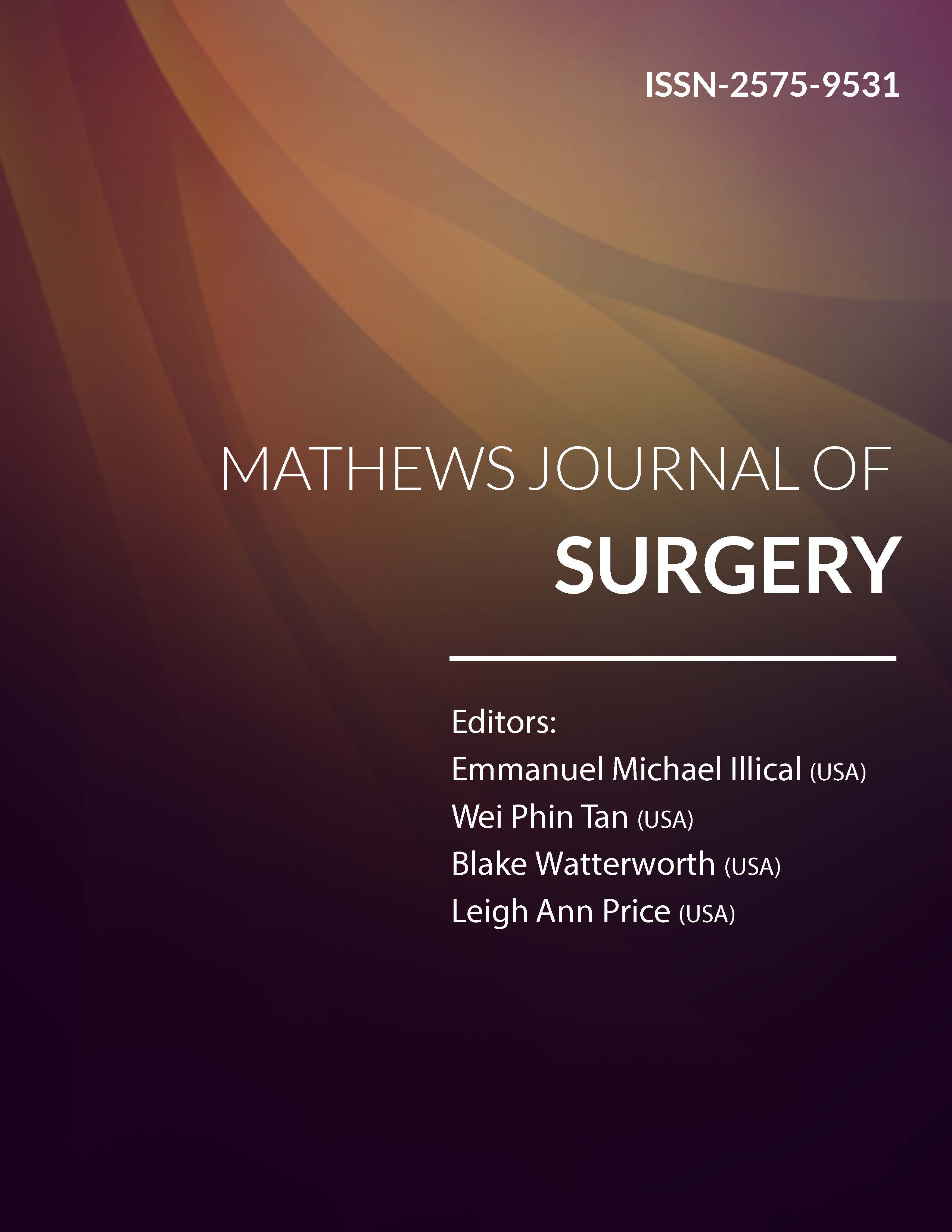
Information Links
Previous Issues Volume 6, Issue 3 - 2023
Hemorrhagic Shock After Rupture of an Abdominal Aortic Aneurysm in a Woman with No Medical History: A Case Report
Redha Lakehal1,*, Jalaleddinne Omar Bouhidel2, Soumaya Bendjaballah1, Khaled Khacha3,Abdelmalek Bouzid3, Radouane Boukarroucha1
1Faculty of Medicine, Constantine, Algeria
2Faculty of Medicine Batna, Algeria
3Faculty of Medicine, Algiers, Algeria
*Corresponding Author: Redha Lakehal, Faculty of Medicine, Algiers, Algeria; Email: [email protected]
Received Date: July 20, 2023
Publication Date: September 04, 2023
Citation: Lakehal R, et al. (2023). Hemorrhagic Shock After Rupture of an Abdominal Aortic Aneurysm in a Woman with No Medical History: A Case Report. Mathews J Surg. 6(3):22.
Copyright: Lakehal R, et al. © (2023)
ABSTRACT
Introduction: The rupture of an aneurysm of the abdominal aorta is so serious, that it is better to detect the aneurysm before it manifests itself, in order to be able to monitor it, and if necessary operate it "quietly". Rupture of the aneurysm is a progressive complication. The risk of breakage becomes significant when the diameter is greater than 50 mm. The rupture most often occurs in the abdominal cavity, causing massive bleeding, which is often fatal. Sometimes the rupture is less important and allows an emergency intervention, after a transfer to a vascular surgery department. We report a case of an unprecedented woman with hemorrhagic shock following a ruptured abdominal aortic aneurysm. Methods: We report the observation of a 50-year-old woman urgently evacuated from a peripheral health facility following the discovery of a ruptured abdominal aortic aneurysm during pain-motivated abdominal CT angiography excruciating abdominal pain associated with shock. On reception, the patient was in shock with impregnable tension and extreme skin-mucous pallor, transferred quickly to the operating room, the patient suffered a recovered cardiac arrest, after induction an emergency thoracotomy and clamping of the descending thoracic aorta, a median laparotomy and clamping of the abdominal aorta under renal and the two iliac arteries, exploration revealed a large left prerenal hematoma and a rupture of the abdominal aorta on the left lateral wall on a thickened aortic wall. At the time of the exploration, the patient had a cardiac arrest, which was not recovering despite an untimely vascular filling. Results: The patient had a deactivation of the cardiac pump following a state of refractory hemorrhagic shock. A sample of the abdominal aortic wall was taken and sent for anatomo-pathological study. Conclusion: Serious progressive complication. Factors that increase the risk of rupture are: a growth rate greater than 10 mm in 1 year, smoking, arterial hypertension, obstructive pulmonary disease, the sacciform nature of the aneurysm, and finally with a diameter equal to the female sex. The death rate is high after rupture. Treatment can be endovascular or surgical.
Keywords: Aneurysm, abdominal aorta, rupture, state of shock, endovascular, surgery